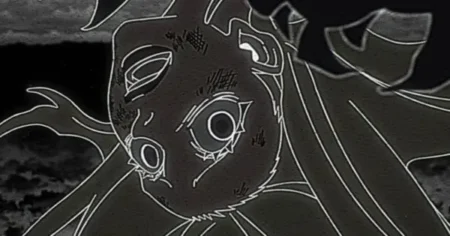Episode 24 of “Orb: On the Movements of the Earth” has ignited discussions among viewers, particularly concerning the complex character of Noak and the implications of scientific discovery in a world ruled by dogma. The anime series, adapted from Uoto’s award-winning manga, explores the historical conflict between reason and religious doctrine, focusing on the revolutionary concept of a heliocentric solar system.
“Orb: On the Movements of the Earth”: A Deep Dive
“Orb: On the Movements of the Earth” (Japanese: チ。―地球の運動について―, Hepburn: Chi: Chikyū no Undō ni Tsuite) is a Japanese manga series written and illustrated by Uoto. It was serialized in Shogakukan’s seinen manga magazine Weekly Big Comic Spirits from September 2020 to April 2022 and later adapted into an anime television series produced by Madhouse, which premiered in October 2024. The story unfolds in 15th century Europe, a time when the prevailing geocentric view of the universe was staunchly defended by the “C religion.” Those who dared to challenge this view, suggesting that the Earth revolves around the Sun, were branded as heretics and faced severe consequences, including torture and execution.
Plot Overview
The manga tells the story of Rafal, a brilliant young prodigy with a keen interest in astronomy. Rafal is drawn into the world of scientific inquiry by Hubert, a scholar secretly researching “the movement of the Earth” theory. When Nowak, an inquisitor, discovers Rafal’s heliocentric diagram, Hubert takes responsibility to protect Rafal and faces execution.
Anime Adaptation
Madhouse produced an anime adaptation which premiered on October 5, 2024, and is set to run for 25 episodes. Kenichi Shimizu directs the series, with Shingo Irie writing, Masanori Shino designing the characters, and Kensuke Ushio composing the music.
Episode 24 Highlights and Discussion
Episode 24 of “Orb: On the Movements of the Earth” continues to explore these themes, focusing on the character Noak and his internal struggles.
Noak’s Internal Conflict
Viewers have noted the powerful depiction of Noak’s transformation in previous episodes, highlighting the scene where he seemingly embraces heliocentrism to seek peace for his deceased daughter. Episode 24 further delves into his character, examining his motivations and the consequences of his actions.
Sacrifice and Scientific Pursuit
A key discussion point revolves around the balance between protecting loved ones and pursuing scientific truth. The episode raises questions about whether there needs to be a purpose for scientific research so individuals can put their lives at risk.
The Progression of Rafal’s Ideas
Viewers have speculated about the character Raa, and whether Raa is just the personification of Rafal’s original ideas. It is shown that Raa is actually a younger Rafal in a flashback.
Earth’s Movements: The Science Behind the Story
The central conflict in “Orb: On the Movements of the Earth” revolves around the Earth’s movements. Understanding the science behind these movements provides context for the characters’ struggles and the historical significance of their discoveries.
Rotation
Rotation is the spinning motion of an object around its own axis. The Earth rotates on its axis, an imaginary line running from the North Pole to the South Pole. This rotation takes approximately 24 hours to complete, resulting in the cycle of day and night. As the Earth rotates from west to east, the Sun appears to rise in the east and set in the west.
The Earth’s rotation also causes the Coriolis effect, which deflects objects moving in the atmosphere or oceans.
Revolution
Revolution refers to an object’s orbital motion around another object. The Earth revolves around the Sun in an elliptical orbit, completing one revolution in approximately 365.25 days, which defines a year. The Earth’s speed during its revolution varies, moving faster at perihelion (closest to the Sun) and slower at aphelion (farthest from the Sun).
Precession
The Earth’s axis is not fixed in space but undergoes a slow wobble called precession. This wobble completes a full cycle approximately every 26,000 years. Precession is caused primarily by the gravitational forces of the Sun and Moon on Earth’s equatorial bulge.
Understanding Earth’s Structure
The Earth comprises several layers, each with distinct properties and compositions.
The Crust
The crust is the outermost solid layer of the Earth and it varies in thickness, ranging from about 5 to 25 miles.
- Oceanic crust: Thinner and denser, primarily composed of basalt.
- Continental crust: Thicker and less dense, mainly composed of granite.
The crust is broken into pieces called plates, which are constantly shifting and interacting, leading to earthquakes and volcanic activity.
The Mantle
The mantle is the thickest layer of the Earth, extending to a depth of approximately 2,900 kilometers (1,802 miles). It is composed of hot, dense, iron and magnesium-rich solid rock. The upper part of the mantle and the crust form the lithosphere, which is divided into tectonic plates.
The Core
The core is the Earth’s center, divided into two parts:
- Outer core: A liquid layer composed of nickel, iron, and molten rock, with temperatures reaching up to 5,000°C (9,032°F).
- Inner core: A solid sphere primarily made of iron and nickel. Extreme pressure keeps it in a solid state despite very high temperatures.
Historical Context: Heliocentrism vs. Geocentrism
The conflict in “Orb: On the Movements of the Earth” reflects the historical shift from a geocentric (Earth-centered) to a heliocentric (Sun-centered) view of the universe.
Geocentrism
For centuries, the geocentric model, supported by figures like Ptolemy, was the dominant cosmological view. It placed the Earth at the center of the universe, with the Sun, Moon, and stars revolving around it. This view aligned with philosophical and religious beliefs of the time.
Heliocentrism
In the 16th century, Nicolaus Copernicus proposed a heliocentric model, suggesting that the Earth and other planets revolve around the Sun. This idea challenged the established order and faced strong opposition from the Church and those who adhered to traditional beliefs. Later, scientists like Galileo Galilei and Johannes Kepler provided further evidence supporting heliocentrism, leading to a paradigm shift in scientific understanding.
Conclusion
“Orb: On the Movements of the Earth” Episode 24 continues to captivate audiences with its compelling narrative and thought-provoking themes. By exploring the historical conflict between scientific discovery and religious dogma, the series encourages viewers to contemplate the sacrifices made in the pursuit of knowledge and the importance of challenging established beliefs. The discussions surrounding the anime highlight the enduring relevance of these themes and their impact on society.









